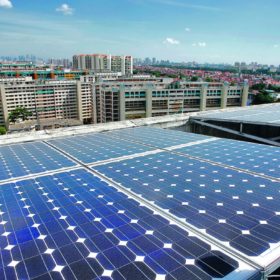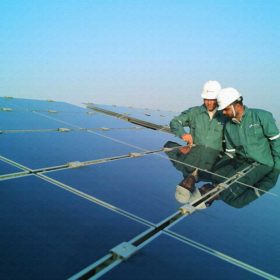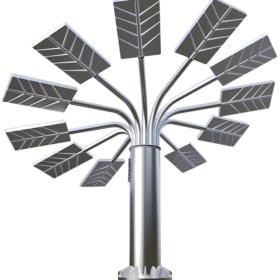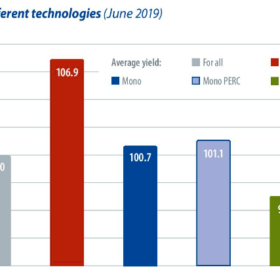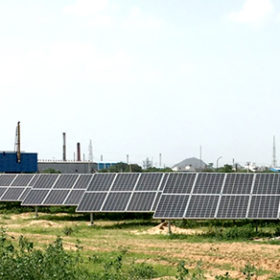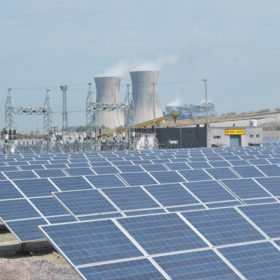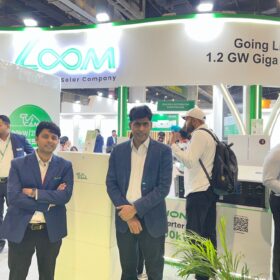Karnataka tops MNRE’s new rooftop PV index
Karnataka has snagged the top spot on the Ministry of New and Renewable Energy’s State Rooftop Solar Attractiveness Index.
India needs to stress equity in push for a green economy
Transition to a green economy in India must be ‘just,’ keeping in mind vulnerable livelihoods. It would need to look at the labour surplus issue, especially for those employed in agriculture and informal sectors—said experts at a national consultative workshop held by sustainability thinktank The Energy and Resources Institute in New Delhi.
PV on water, water usage in focus
Floating PV arrays have the advantage of bypassing lengthy and costly land acquisition processes for developing megawatt-scale solar projects in India. When combined with the additional output from cooler modules and system-level advantages when located on hydro dams, the upside is significant. But durability of modules-on-water is of concern, and one about which there is little awarenesss, says Vivek Chaturvedi, regional business director for DSM Advanced Solar.
CSIR-CMERI develops rotating solar power tree
The solar tree—costing around Rs 3 lakh for 3 kW capacity—auto tracks the sun to generate 10-15% extra power.
There is a need for online solar platforms in India
Most residential customers buy PV systems by obtaining quotes directly from PV installers. However, this can prove time consuming, costly and ineffective. Homeowners need an online quote platform, which offers a seamless buying experience. This can increase solar power awareness among Indian homeowners and help grow the adoption of rooftop solar power in the Indian residential market.
pv magazine test: Latest results
pv magazine test is a cooperative module testing procedure involving pv magazine, CEA and Gsolar. All tests are carried out at Gsolar’s test laboratory in Xi’an, China. CEA supervises them and designed both the indoor and outdoor testing procedures.
IndianOil to invest $3.7bn in green energy projects
The fossil fuel giant announced the plan in its latest annual results. The company envisages rolling out electric vehicle chargers at its petrol and diesel stations.
IIT Kanpur invites EoI for solar-plus-storage smart grid pilots
A total of three smart grid field pilots are to be set up—two inside the IIT Kanpur campus and one at two village hamlets in Kanpur—under a U.S.-India collaborative project on smart distribution system with storage. The deadline for EoI submission is August 30.
Nanowire mesh offers better cell performance and lower costs
A new method of creating an ordered mesh of nanowires, developed by scientists at the Lawrence Livermore National Laboratory in the United States, could lead to the creation of more efficient transparent electrode layers in solar cells – and the elimination of a rare material from the manufacturing process.
NTPC reveals plan to build 5 GW in Gujarat, opens global bids for 1.2 GW
The utility has revealed plans to invest roughly $3 billion in the construction of a 5 GW solar park across two to three locations in Gujarat’s Kutch region. In a separate announcement, the New Delhi-based group opened global bidding to build 1.2 GW of grid-connected solar capacity throughout India.
